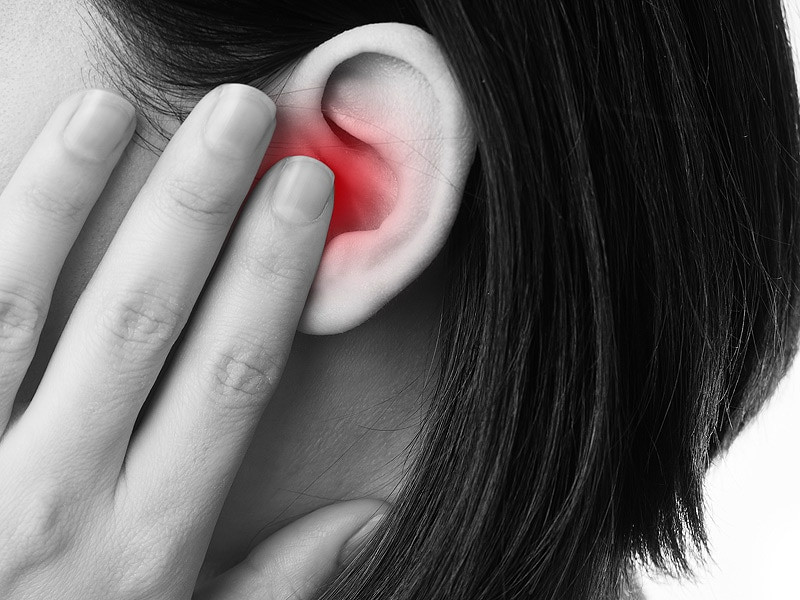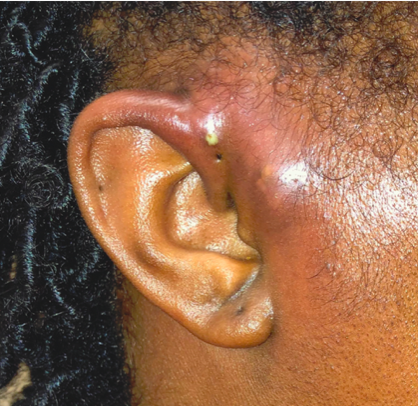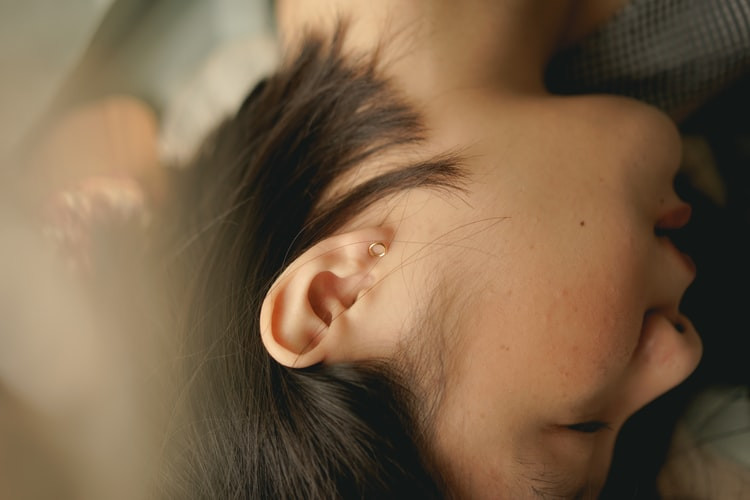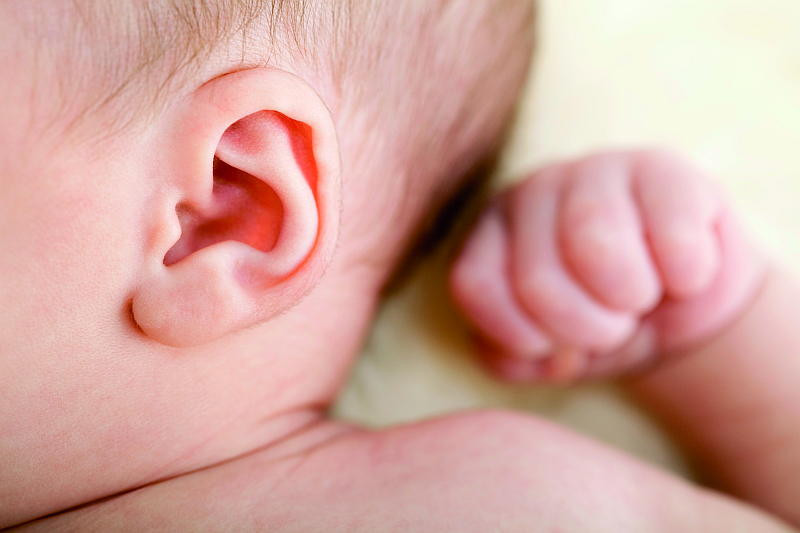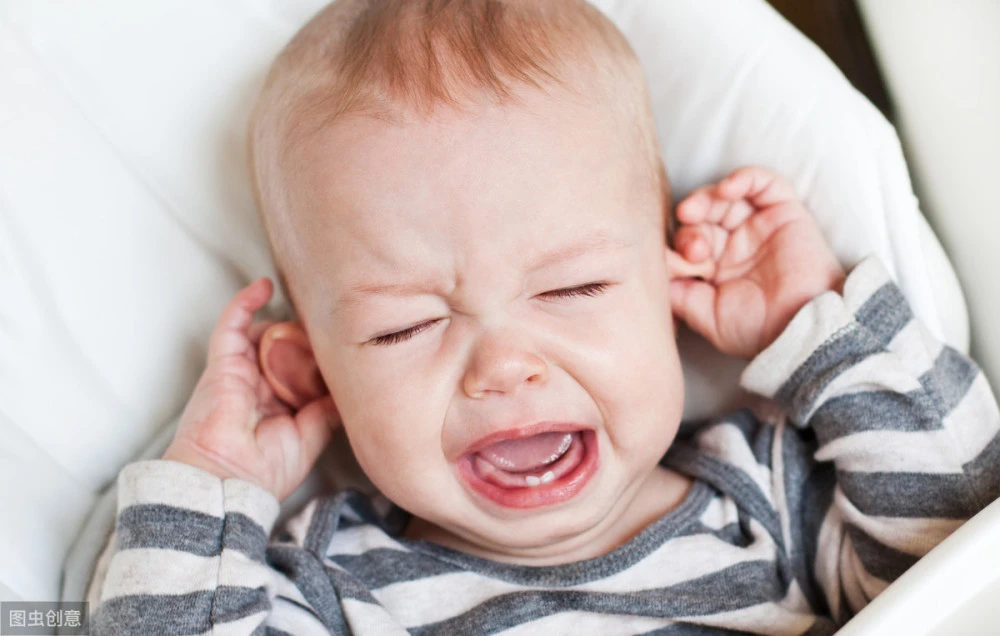Definisi
Otitis eksterna atau swimmer's ear adalah infeksi pada telinga luar. Telinga luar meliputi daun telinga dan liang telinga yang membentang hingga ke gendang telinga. Infeksi ini sering disebabkan oleh air yang tertinggal di liang telinga sehingga menciptakan lingkungan lembab yang mendukung pertumbuhan bakteri.
Mengorek telinga atau memasukan benda asing seperti kapas ke telinga juga dapat menyebabkan otitis eksterna karena merusak lapisan tipis kulit yang melapisi liang telinga.
Umumnya, otitis eksterna bisa diobati dengan obat tetes telinga. Pengobatan yang dilakukan segera dapat mencegah komplikasi dan infeksi yang lebih serius.
Penyebab
Otitis eksterna biasanya disebabkan oleh bakteri, jarang disebabkan oleh jamur atau virus.
Pertahanan alami telinga
Saluran telinga luar memiliki pertahanan alami yang membantu menjaganya tetap bersih dan mencegah infeksi. Komponen pelindung tersebut meliputi:
- Lapisan tipis lilin yang bersifat asam dan anti air, melapisi saluran telinga dan menghambat pertumbuhan bakteri. Akumulasi dari lapisan lilin ini, sel-sel kulit mati, dan kotoran lainnya membentuk kotoran telinga atau serumen. Serumen dapat bergerak ke arah lubang telinga karena digerakan oleh rambut-rambut halus di lapisan liang telinga
- Bentuk telinga luar, termasuk daun telinga, membantu mencegah masuknya benda asing
Bagaimana infeksi terjadi?
Jika Anda mengalami otitis eksterna, berarti pertahanan alami telinga Anda sedang terganggu. Kondisi yang sering berperan dalam terjadinya otitis eksterna antara lain:
- Kelembaban yang berlebih di saluran telinga sehingga menciptakan lingkungan yang ideal untuk pertumbuhan bakteri
- Paparan air yang terkontaminasi
- Kerusakan pada lapisan kulit liang telinga yang sensitif, sehingga menimbulkan luka kecil tempat masuknya kuman
Faktor Risiko
Faktor-faktor yang dapat meningkatkan risiko otitis eksterna meliputi:
- Kelembaban yang berlebihan pada saluran telinga, misal karena keringat berlebih, cuaca lembab yang berkepanjangan, atau sisa air di telinga setelah berenang
- Paparan bakteri dalam jumlah banyak pada air yang terkontaminasi
- Membersihkan saluran telinga dengan cotton bud, peniti, jepit rambut, atau kuku, dapat menyebabkan goresan atau lecet tempat masuknya kuman
- Penggunaan perangkat telinga, seperti earbud atau alat bantu dengar, dapat menyebabkan kerusakan kecil pada kulit
Gejala
Gejala otitis eksterna umumnya ringan pada awalnya, namun dapat memburuk jika tidak diobati atau infeksi semakin meluas. Berdasarkan tingkat keparahannya, otitis eksterna digolongkan menjadi tahap ringan, sedang, dan lanjut.
Tanda dan gejala tahap ringan
- Gatal pada saluran telinga
- Kemerahan di liang telinga
- Rasa tidak nyaman pada telinga yang dapat diperberat jika menarik daun telinga atau menekan tonjolan kecil di depan telinga (tragus)
- Keluar cairan bening dan tidak berbau dari dalam telinga
Tanda dan gejala tahap sedang
- Gatal yang terasa lebih sering
- Nyeri yang memberat
- Kemerahan yang semakin meluas pada telinga
- Lebih banyak keluar cairan dari telinga
- Telinga terasa penuh dan tersumbat akibat pembengkakan lapisan liang telinga, keluarnya cairan, dan kotoran telinga
- Mulai terdapat penurunan pendengaran
Tanda dan gejala tahap lanjut
- Nyeri berat yang menjalar ke wajah, leher, atau kepala
- Penyumbatan total pada saluran telinga
- Kemerahan atau pembengkakan pada telinga luar
- Pembengkakan kelenjar getah bening di leher
- Demam
Diagnosis
Dokter umumnya sudah dapat mendiagnosa otitis eksterna melalui wawancara keluhan, riwayat kesehatan, dan pemeriksaan fisik. Namun, jika infeksi sudah mencapai tahap lanjut, mungkin diperlukan pemeriksaan penunjang lainnya.
Pemeriksaan awal
Dokter mendiagnosa otitis eksterna berdasarkan gejala dan pemeriksaan fisik. Anda mungkin tidak memerlukan tes laboratorium pada kunjungan pertama.
Evaluasi awal dokter biasanya meliputi:
- Memeriksa saluran telinga dengan teropong yang ujungnya menyala (otoskop). Saluran telinga biasanya tampak merah, bengkak, bersisik, dan terdapat serpihan kulit atau kotoran lain di saluran telinga
- Memeriksa gendang telinga untuk memastikan ada robekan atau tidak
Pemeriksaan tahap lanjut
Dokter merekomendasikan pemeriksaan tahap lanjut berdasarkan hasil pemeriksaan awal, tingkat keparahan gejala, atau stadium otitis eksterna. Pemeriksaan tersebut meliputi:
- Jika gendang telinga rusak atau robek, dokter keluarga akan merujuk ke dokter spesialis telinga, hidung, dan tenggorokan (THT). Spesialis THT akan memeriksa kondisi telinga tengah untuk menentukan apakah sumber infeksi berasal dari telinga tengah. Pemeriksaan ini penting karena pengobatan infeksi telinga luar berbeda dengan infeksi telinga tengah
- Jika infeksi tidak merespon dengan pengobatan, dokter akan mengambil sampel cairan atau kotoran telinga lalu mengirimkannya ke laboratorium untuk memeriksa kuman yang menyebabkan infeksi
Tata laksana
Tujuan pengobatan adalah untuk menghentikan infeksi dan memulihkan saluran telinga hingga sembuh total.
Pembersihan
Membersihkan saluran telinga luar diperlukan untuk membantu obat tetes telinga dapat mengalir ke semua area yang terinfeksi.
Obat infeksi
Pada sebagian besar kasus otitis eksterna, dokter akan meresepkan beberapa obat tetes telinga, tergantung jenis dan tingkat keparahan infeksi:
- Larutan asam untuk membantu menyeimbangkan lingkungan antibakteri di telinga
- Steroid untuk mengurangi peradangan
- Antibiotik untuk mengobati infeksi bakteri
- Obat antijamur untuk mengobati infeksi jamur
Konsultasi pada dokter mengenai cara terbaik menggunakan obat tetes telinga. Beberapa tips dalam menggunakan obat tetes telinga antara lain sebagai berikut:
- Kurangi rasa tidak nyaman akibat obat tetes yang dingin dengan menggenggam botol di tangan selama beberapa menit untuk membuat suhu obat sama dengan suhu tubuh
- Setelah meneteskan obat, berbaring miring pada sisi telinga yang sehat, sehingga telinga yang sakit berada di atas dan tunggu beberapa menit agar obat menyebar ke seluruh liang telinga
- Jika memungkinkan, minta bantuan orang lain untuk meneteskan obat ke telinga Anda
- Untuk memperlebar liang telinga saat meneteskan obat, tarik telinga ke atas dan ke arah belakang
Jika infeksi memberat atau tidak merespon dengan obat tetes telinga, dokter akan meresepkan antibiotik oral.
Obat nyeri
Dokter dapat menyarankan penggunaan obat nyeri untuk meredakan sakit telinga, seperti obat ibuprofen, naproxen sodium, atau paracetamol. Jika rasa sakit atau infeksi memberat, dokter akan meresepkan obat nyeri yang lebih kuat.
Selama pengobatan, lakukan hal berikut untuk menjaga telinga Anda tetap kering dan menghindari iritasi lebih lanjut:
- Jangan berenang atau menyelam
- Jangan memakai penyumbat telinga, alat bantu dengar, atau earbud selama telinga masih sakit atau keluar cairan
- Jaga telinga agar tidak kemasukan air saat mandi
Komplikasi
Otitis eksterna umumnya bukan penyakit yang serius jika segera diobati. Namun, komplikasi tetap dapat terjadi, terutama jika terlambat ditangani. Beberapa komplikasi otitis eksterna antara lain:
- Gangguan pendengaran sementara, biasanya akan membaik setelah infeksi teratasi
- Infeksi jangka panjang atau otitis eksterna kronis. Infeksi telinga luar dianggap kronis jika tanda dan gejalanya menetap lebih dari tiga bulan. Infeksi kronis lebih sering terjadi jika ada kondisi yang mempersulit pengobatan, seperti jenis bakteri yang langka, reaksi alergi pada kulit, reaksi alergi terhadap obat tetes telinga antibiotik, penyakit kulit seperti dermatitis atau psoriasis, atau kombinasi infeksi bakteri dan jamur
- Infeksi jaringan di bawah kulit atau selulitis. Komplikasi ini jarang terjadi
- Kerusakan tulang rawan telinga dan tulang tengkorak atau osteomielitis dasar tengkorak tahap awal. Ini merupakan komplikasi langka yang terjadi karena infeksi semakin meluas. Komplikasi ini menimbulkan rasa sakit yang semakin parah. Orang tua, penderita diabetes, atau orang dengan kekebalan tubuh yang lemah lebih berisiko mengalami komplikasi ini
- Infeksi yang meluas. Jika otitis eksterna berkembang menjadi osteomielitis dasar tengkorak tahap lanjut, infeksi dapat menyebar ke bagian tubuh lain, seperti otak atau saraf di dekatnya. Komplikasi langka ini dapat mengancam jiwa
Pencegahan
Langkah-langkah pencegahan otitis eksterna adalah sebagai berikut:
- Jaga agar telinga tetap kering. Setelah berenang atau mandi, miringkan kepala ke samping untuk membantu air keluar dari telinga. Keringkan hanya bagian luar telinga, usap dengan hati-hati menggunakan handuk lembut
- Berenanglah dengan hati-hati. Pilih area berenang yang bersih. Tanyakan kondisi air tempat Anda berenang pada pengelola tempat tersebut
- Lindungi telinga saat berenang, seperti menggunakan penyumbat telinga atau topi renang agar telinga tetap kering
- Jika Anda baru saja mengalami infeksi atau operasi telinga, konsultasikan dengan dokter sebelum berenang.
- Lindungi telinga dari iritasi. Jangan meletakkan benda asing ke dalam telinga. Jangan pernah mencoba menggaruk atau mengambil kotoran telinga dengan benda-benda seperti kapas, penjepit kertas, atau jepit rambut karena justru akan mendorong kotoran lebih dalam, mengiritasi kulit tipis pada saluran telinga, atau bahkan merusak kulit
Kotoran telinga akan bergerak ke arah lubang saluran telinga karena ada rambut-rambut halus pada lapisan saluran telinga yang menggerakannya. Setelah berada di ujung lubang telinga, kotoran akan terbilas saat mandi dan bersih dengan sendirinya. Jika Anda ingin membersihkannya, bersihkan dengan lembut menggunakan kain lembab. Namun, sebaiknya hindari mengorek telinga, apalagi menggunakan benda keras.
Jika Anda memiliki kotoran telinga dalam jumlah banyak atau hingga menyumbat saluran telinga, jangan memaksa untuk mengeluarkan kotoran. Periksalah ke dokter dan minta bantuan dokter untuk membersihkannya menggunakan alat yang bersih dan steril.
Kapan Harus ke Dokter?
Konsultasi dengan dokter jika Anda memiliki tanda atau gejala otitis eksterna yang ringan. Namun, segera kunjungi unit gawat darurat jika gejala otitis eksterna disertai nyeri telinga hebat dan demam.
Mau tahu informasi seputar penyakit lainnya, cek di sini ya!
- dr Anita Larasati Priyono
Swimmer's ear. (2021). Retrieved 10 March 2022, from https://www.mayoclinic.org/diseases-conditions/swimmers-ear/symptoms-causes/syc-20351682
Bowman J. (2019). Outer ear infection (Swimmer's ear). Retrieved 10 March 2022, from https://www.healthline.com/health/otitis-externa#
Waltzman AA. (2020). Otitis externa. Retrieved 10 March 2022, from https://emedicine.medscape.com/article/994550-overview
Medina-Blasini Y, Sharman T. (2020). Otitis Externa. StatPearls Publishing. Retrieved 10 March 2022, from https://www.ncbi.nlm.nih.gov/books/NBK556055/

